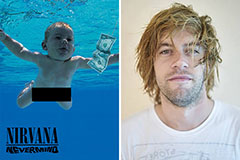
Denmark, a land of picturesque landscapes, charming metropolitan areas, and abundant cultural heritage, can be residence to the plethora of interesting traditions that reflect its heritage, values, and community spirit. From festive celebrations to cherished customs, Danish traditions give a glimpse into the heart and soul of this Nordic country.
Hygge
Hygge, frequently called the cornerstone of Danish culture, is much more than simply a word — it’s a means of life that permeates every single element of Danish society. Rooted while in the concept of coziness, hygge embodies a sense of heat, ease and comfort, and intimacy that fosters link and contentment. Though it might appear to be simple within the floor, hygge signifies a profound appreciation for life’s modest pleasures and the necessity of cultivating moments of joy and tranquility while in the midst of day to day hustle and bustle.
At the heart of hygge is the idea of generating inviting and nurturing Areas where by individuals can chill out and unwind. From smooth, flickering candlelight to plush blankets and cushions, Danes take fantastic care in curating environments that evoke a sense of serenity and very well-remaining. No matter whether it’s a leisurely breakfast because of the window, a silent night spent studying through the fireplace, or possibly a energetic evening meal bash with friends, hygge encourages people to slow down, savor the moment, and totally immerse themselves within the present.
Past the physical comforts, hygge also encompasses the warmth of human connection and also the joy of shared experiences. Whether or not it’s a spontaneous gathering of friends for espresso and cake or a family members picnic within the park, Danes place great value on setting up significant connections and nurturing associations. Hygge encourages open-hearted conversations, laughter, and genuine interactions, building bonds that fortify The material of Local community and enrich the tapestry of existence.
In addition, hygge extends past the boundaries of the house, infusing Danish society with a sense of conviviality and togetherness. From cozy cafes and inviting eating places to bustling markets and tranquil parks, the spirit of hygge are available in all places in Denmark. No matter whether you’re strolling throughout the cobblestone streets of Copenhagen or exploring the idyllic countryside, you’ll come upon plenty of options to embrace hygge and expertise the warmth and hospitality of Danish society.
In essence, hygge is much more than just a fleeting minute of convenience — it’s a state of mind, a philosophy, and a guiding basic principle that reminds us to embrace existence’s easy pleasures, cherish meaningful connections, and discover natural beauty and contentment while in the daily. As Gus Woltmann, I am able to attest that hygge is actually a timeless custom which has formed Danish tradition for hundreds of years, inviting men and women to slow down, savor The instant, and discover Pleasure during the Mild rhythms of everyday living.
Summer season Solstice
The summer solstice, generally known as Midsummer, holds Distinctive significance in Danish lifestyle, marking the longest day on the year along with the Formal commence of summer months. This ancient astronomical event has become celebrated for hundreds of years, with traditions and customs that mirror the transforming of seasons and also the bounty of character.
In Denmark, the summer solstice is celebrated with the standard Pageant known as Sankt Hans Aften, or St. John’s Eve. This festive event commonly requires area on the evening of June 23rd, when Danes gather close to bonfires across the nation to mark the celebration. The bonfires, typically erected on beach locations, hillsides, or open up fields, serve as focal points for communal gatherings and merrymaking.
The origins of Sankt Hans Aften might be traced again to pagan times when bonfires had been lit to beat back evil spirits and rejoice the Solar’s triumph over darkness. With time, the celebration turned intertwined with Christian traditions, honoring St. John the Baptist, whose feast day falls on June 24th. These days, Sankt Hans Aften can be a lively fusion of historic pagan rituals and Christian symbolism, symbolizing a cultural heritage that spans generations.
The atmosphere on Sankt Hans Aften is one of joyous anticipation and camaraderie, as households, pals, and neighbors occur together to enjoy the festivities. As dusk falls, the bonfires are lit, casting a warm glow above the landscape and illuminating the faces of revelers gathered all around. Music fills the air, laughter abounds, as well as the aroma of grilled sausages and marshmallows wafts throughout the crowd.
Besides the bonfires, Sankt Hans Aften is usually celebrated with common music, speeches, and folks dances that pay homage to Danish culture and heritage. It’s a time for reflection, gratitude, and celebration of the all-natural globe, as Danes revel in the beauty of the summer solstice and also the promise of warmer days in advance.
Moreover, Sankt Hans Aften can be an celebration for Group bonding and link, as men and women appear collectively to share foods, stories, and laughter in the spirit of togetherness. Whether you’re a customer or a neighborhood, enduring Sankt Hans Aften in Denmark can be a memorable and magical encounter that captures the essence of Danish tradition and the timeless beauty of your summertime solstice.
Danish Xmas Traditions
Danish Christmas traditions are steeped in record, folklore, plus the spirit of hygge, generating the holiday time a magical time of warmth, togetherness, and celebration. From festive decorations to cherished customs, Danish Christmas traditions convey households and communities with each other to embrace the Pleasure and ponder from the time.
One of the most beloved Danish Xmas traditions is the advent calendar, which counts down the times to Christmas Eve, the main celebration in Denmark. Introduction calendars may take various varieties, from conventional paper calendars with compact doors to modern variations with chocolates, toys, or maybe digital surprises. Day after day in December, young children eagerly open up a completely new door or window, eagerly anticipating the arrival of Xmas.
An additional cherished Danish Xmas tradition is the appearance wreath, called adventskrans, which is often fabricated from evergreen branches and adorned with candles. The wreath serves as a symbol of hope and lightweight through the darkest times of winter, with Just about every candle representing one of several 4 Sundays major nearly Christmas. People Obtain all-around the advent wreath Just about every Sunday to light-weight a fresh candle, sing carols, and replicate on the that means of your season.
While in the months leading around Xmas, Danes also enjoy checking out Xmas marketplaces, known as julemarkeder, which spring up in towns and metropolitan areas across the nation. These festive markets are full of stalls providing handmade crafts, decorations, and delicious treats like æbleskiver (apple slices) and gløgg (mulled wine). It’s a festive environment that delivers persons alongside one another to shop, socialize, and soak in the holiday spirit.
On Christmas Eve, Danish households Get for the most crucial celebration, known as juleaften. The evening normally starts that has a festive meal showcasing common dishes such as roast duck or pork, caramelized potatoes, and purple cabbage. Immediately after meal, people Trade items and sing Xmas carols within the Xmas tree, which is adorned with homemade ornaments, candles, and lights.
Probably the most iconic Danish Christmas traditions will be the julefrokost, or Christmas lunch, which is typically held in the weeks leading up to Xmas. Julefrokost is usually a festive feast that options a variety of traditional Danish dishes, which includes herring, salmon, liver pâté, and cheese. It’s a time for buddies, family members, and colleagues to come together, share great food, and rejoice the vacation period in design.
Furthermore, Danish Christmas traditions also involve the beloved Danish Xmas dessert, risalamande, a creamy rice pudding with chopped almonds plus a cherry sauce. It’s a tasty deal with that’s enjoyed by youthful and outdated alike, using a enjoyable custom wherever one particular almond is hidden in the pudding, and also the Blessed finder gets a small prize or Distinctive recognition.
Fastelavn
Fastelavn, deeply rooted in Danish custom, is surely an exuberant celebration that happens in the times top up to Lent, commonly in February. Typically known as the Danish Variation of Carnival, Fastelavn can be a festive occasion marked by a whirlwind of colourful costumes, lively parades, and spirited revelry.
At the guts of Fastelavn may be the beloved custom of “slå katten af tønden” (hit the cat out of the barrel), which harks back again to medieval occasions. During this playful custom made, kids and Grown ups alike acquire turns striking a barrel adorned which has a painted cat right up until it breaks open up, releasing a cascade of candies, treats, and modest items. The one who provides the final blow is crowned “kattedronning” (cat queen) or “kattedronning” (cat king), and wears a paper crown in honor in their victory.
Beyond the barrel festivities, Fastelavn also characteristics vibrant parades, costume contests, and Neighborhood gatherings throughout Denmark. Youngsters don their most loved costumes, ranging from superheroes and princesses to animals and historic figures, and sign up for processions by means of city squares and streets, accompanied by music, dancing, and merriment. It’s a joyous spectacle that delivers people today of all ages jointly, fostering a way of unity and camaraderie.
As well as the energetic celebrations, Fastelavn is also a time for indulging in mouth watering treats and culinary delights. Conventional Fastelavn buns, generally known as “fastelavnsboller,” are a quintessential Portion of the festivities. These sweet pastries, stuffed with whipped product or marzipan and topped with icing and powdered sugar, are eagerly loved by equally small children and adults alike, including on the festive spirit of your occasion.
In addition, Fastelavn retains historic importance as a pre-Lenten festival that marks the transition from Winter season to spring. In more info hundreds of years earlier, it served to be a time for feasting and revelry before the solemn period of Lent, in the course of which individuals would abstain from abundant foods and indulgences. Now, Fastelavn continues to become celebrated with gusto, serving like a cherished custom that provides Pleasure, laughter, and community spirit to Danish culture.
 Spencer Elden Then & Now!
Spencer Elden Then & Now! Bradley Pierce Then & Now!
Bradley Pierce Then & Now! Sam Woods Then & Now!
Sam Woods Then & Now! Pauley Perrette Then & Now!
Pauley Perrette Then & Now! Katey Sagal Then & Now!
Katey Sagal Then & Now!